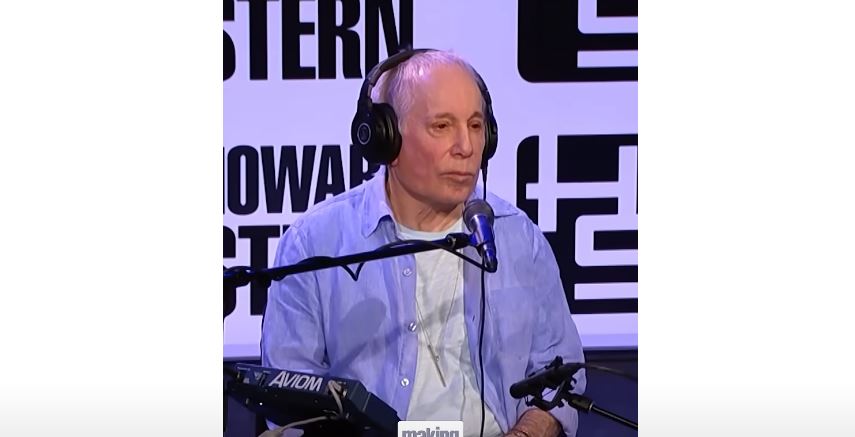Once incredibly smooth, Simon and Garfunkel’s musical collaboration came to an unavoidable end in July 1970. The split became glaringly obvious following a final show in New York City, which was poignantly marked by the release of Bridge Over Troubled Water, their final studio album. The emotional disintegration had been subtly speeding up for a while, despite appearances.
Art Garfunkel’s foray into acting, especially in Catch-22, brought a fresh, noticeably disruptive energy to their partnership. Writing and arranging their music nonstop, Paul Simon found himself taking on more and more of the creative load by himself. Their chemistry, which had once been incredibly intuitive, deteriorated into cautious, professional interaction over the course of several tumultuous months.
| Category | Details |
|---|---|
| Band Name | Simon & Garfunkel |
| Members | Paul Simon, Art Garfunkel |
| Formation Year | 1956 (as Tom & Jerry); reformed in 1963 as Simon & Garfunkel |
| Breakup Year | July 1970 |
| Key Albums | *Sounds of Silence*, *Parsley, Sage, Rosemary and Thyme*, *Bookends*, *Bridge Over Troubled Water* |
| Final Concert (before breakup) | New York City, July 1970 |
| Reference Source | Wikipedia – Simon & Garfunkel |
Tensions were noticeably higher when Bridge Over Troubled Water was being recorded. Garfunkel’s increasing distance from Simon’s artistic vision, which had been molded by innumerable late nights spent honing lyrics and melodies, was a stark contrast. Producing songs with minimal assistance from his partner, Simon took charge of the studio sessions and created music that would go on to become classics while feeling incredibly alone.
Simon tried to mend their deteriorating relationship by using his skill as a songwriter. However, it became much more difficult to overlook the imbalance: one artist was completely absorbed, while the other was only partially present. The emotional and physical distance between Garfunkel and the film sets grew steadily until a final break was all but inevitable as he spent more and more time on them.

Their split has been remarkably frequently compared over the years to other famous creative splits, such as Lennon and McCartney, Stevie Nicks, and Lindsey Buckingham, where individual goals and shifting dynamics ultimately overshadowed creative genius. In many respects, the tale of Simon and Garfunkel is especially representative of how brittle even the strongest relationships can become as life’s stresses increase.
Paul Simon has been very explicit about the emotional toll in recent interviews. In retrospect, he talked about feeling creatively left behind as he watched his best friend pursue an acting career while he was the only one pursuing the music that had once been their shared passion. Once their haven, the studio turned into a particularly isolating place for Simon, resonating with expectations that were no longer shared.
Collaboration in early-stage bands frequently flourishes on equal dedication and sacrifice. The later years of Simon and Garfunkel, on the other hand, starkly illustrated how unequal contributions can undermine even the most cherished collaborations. Garfunkel’s absence during crucial recording sessions added to Simon’s mounting annoyance, which ultimately proved to be the last, subtly devastating blow.
Notably, both artists forged separate careers through calculated solo endeavors. With its especially creative blending of genres, Simon’s album Graceland became a cultural phenomenon. Garfunkel, on the other hand, showed incredible adaptability by juggling a solid music career with well-received movie roles. Despite their success, their solo paths never fully restored the emotional alchemy of their formative years.
Simon and Garfunkel’s split seems remarkably pertinent in the pandemic era, when musicians increasingly collaborated remotely. Physical, emotional, or creative distance puts relationships to the test in ways that are very hard to predict. For upcoming artists facing comparable challenges, their experience provides an especially useful lesson.
The seam that had come undone ten years earlier was momentarily repaired in 1981 with a spectacular reunion in Central Park. A performance that was both a celebration and, in a quiet way, an elegy was witnessed by more than half a million fans, many of whom were motivated by nostalgia. The show was more of an opulent bandage than a genuine reconciliation, despite its remarkable success in reigniting public affection.
Through carefully crafted media appearances and strategic interviews, Simon and Garfunkel both reluctantly acknowledged that their fundamental problems remained unresolved. Although their 1981 tour seemed promising at first, it eventually echoed the same strains: disparate visions, unequal participation, and waning camaraderie. The hope of a long-term reunion had diminished considerably by the time Hearts and Bones was completed as a solo Paul Simon project.
Simon and Garfunkel’s split highlights a more general reality in light of changing industry dynamics: maintaining creative collaborations requires not only talent but also time, presence, and an unwavering dedication to common objectives. No amount of fame, nostalgia, or material success can completely make up for the loss of these qualities.
Their music has lasted incredibly well over the years, enduring generational shifts and maintaining a moving timeless quality. Songs that are surprisingly inexpensive in their simplicity but rich in human insight, such as America, Cecilia, and The Sound of Silence, remain emotional touchstones.
Their legacy is one of change rather than failure. The purity of what Simon and Garfunkel had produced was maintained by entering separate futures, enabling fans to remember the music free from the resentment that frequently accompanies strained collaborations. In that regard, their split was very effective in preserving their creative legacy.
Thoughts on their journey have significantly expanded since the release of significant biographical documentaries such as In Restless Dreams: The Music of Paul Simon. Both artists now discuss their relationship with a blend of tenderness and necessary distance after navigating the complexities of life beyond their early fame.
